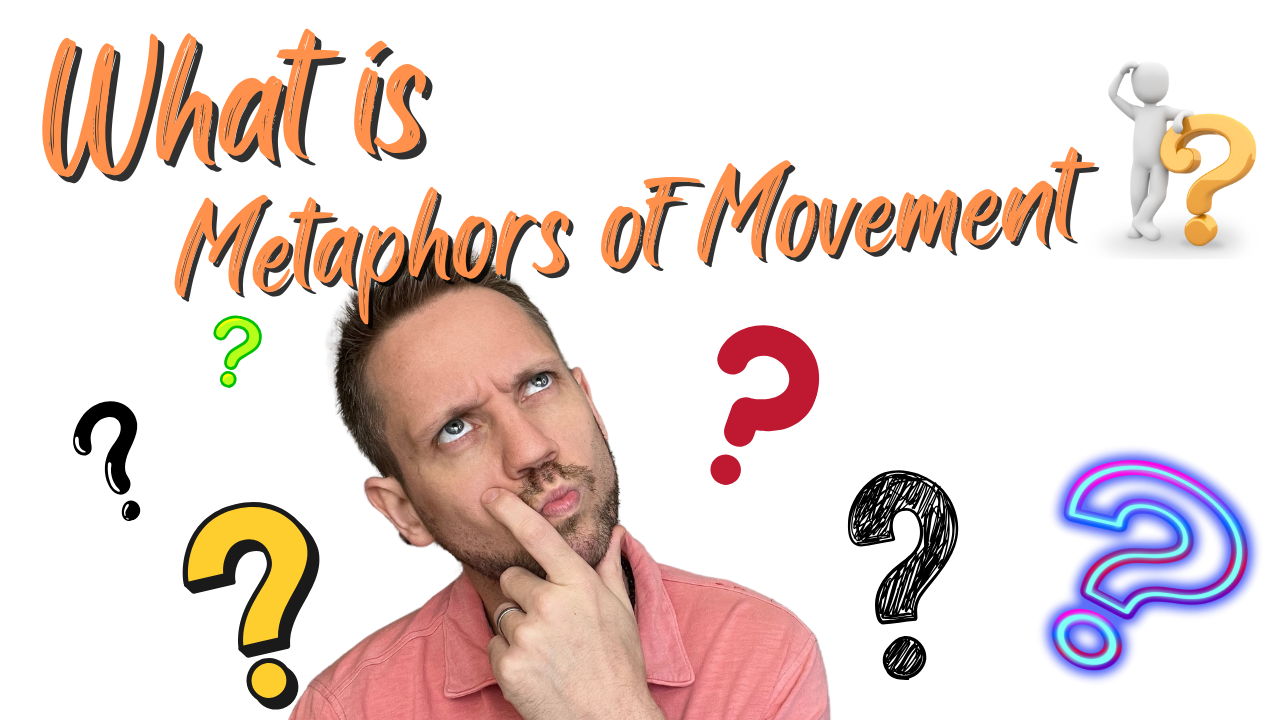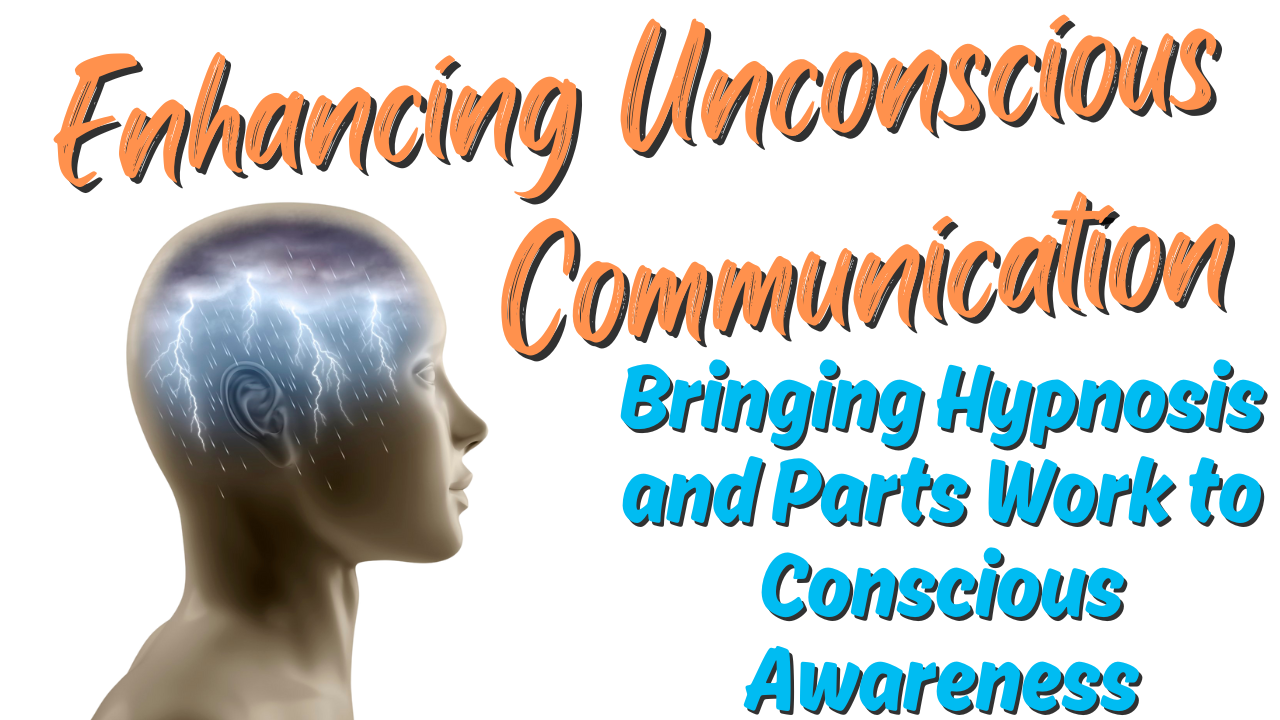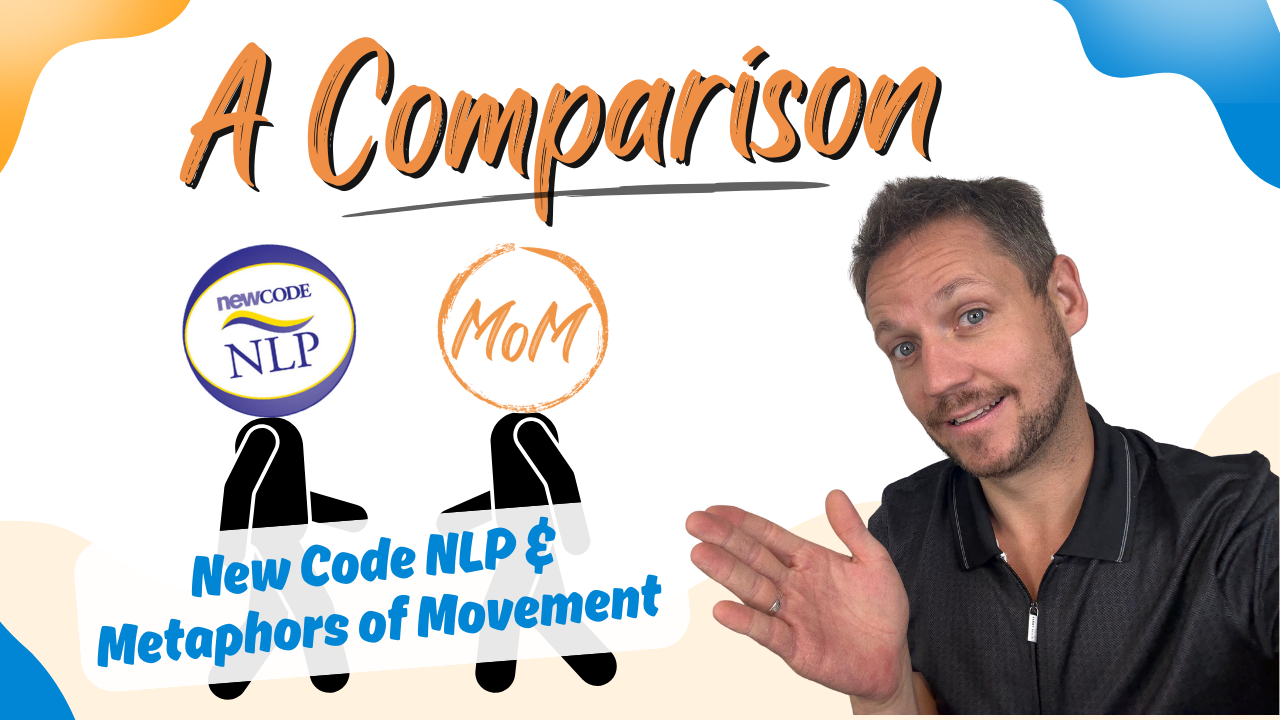Change Work in Mental Space: A Conversation with Stephen Sillett
This article explores how we can use mental space as a practical tool for working with teams and communities, especially those with communication or physical barriers. It draws on a conversation I had with Stephen Sillett, who works with spatial dynamics to help groups map their shared experiences using simple materials, bypassing language when needed.
We also look at three modalities that work within mental space in different ways: Clean Language, Mindscaping, and Metaphors of Movement how they overlap, how they differ, and what each is uniquely good at.
What Is Mental Space?
Mental space psychology is a way of understanding how people store and organize thoughts, memories, and experiences in a kind of internal 3D space.
Let me give you a basic example: if I asked you to picture a dog, you might get a flash of an image  somewhere in front of you. Maybe it’s just a vague sense that it’s there. You might picture it to your left or to your right, closer or further away. The point is it’s not random. That placement is part of your personal mental landscape. And when we start to explore that space, we start to discover how people relate to the world and others in deep, often unconscious ways.
somewhere in front of you. Maybe it’s just a vague sense that it’s there. You might picture it to your left or to your right, closer or further away. The point is it’s not random. That placement is part of your personal mental landscape. And when we start to explore that space, we start to discover how people relate to the world and others in deep, often unconscious ways.
Using Mental Space in Community Work
Stephen Sillett employs a unique approach to community engagement by using material to represent and map out the community's mental space. In a physical space, such as a room, participants place various material fabric that have different shapes sizes and textures to symbolize different aspects of their community. The placement, texture, color, and arrangement of these materials provide insights into how community members perceive their environment and relationships.
This can be useful as it:
- Transcends language barriers, allowing individuals to express complex emotions and perceptions through spatial arrangements.
- It also respects cultural differences in spatial orientation and symbolism, providing a universal language for community mapping.
-
It can be used by those who have physical or mental disabilities creating a framework that can be used with all elements of the community.
This is a whole new area of exploration within mental space and unlike most modalities it opens up the possibiliy of explore more complex systems. Meaning, you can work at a team and community level which is often a limitation of other modalities which work within mental space.
If you are interested in contacting Stephen or learning more about his work you can reach him via Linkedin or his company website.
Linkedin: https://www.linkedin.com/in/ssillett/?originalSubdomain=ca
Company Website: https://imaginingpossibilities.adcid.org/
Comparing Clean Language, Mindscaping and Metaphors of Movement
Clean Language
Created by David Grove and further developed by James Lawley and Penny Tompkins, Clean Language utilizes a set of specific questions to explore a person's internal metaphors without imposing the therapist's interpretations. This approach helps individuals uncover and articulate their subconscious thoughts and feelings. However, as noted by Judy Rees, Clean Language can sometimes lead to fragile structures if not handled with care, as it delves deeply into the client's internal world.
Clean Languge works by asking the 7 clean language questions. These questions are designed in a way to 'remove' the therapist from exploration and focuses on allowing the space for the client to discover their own internal world of experience.
Advantages:
-
-
Deeply respectful – Keeps therapist influence to a minimum, honoring the client’s worldview.
-
Great for complex issues – Helps untangle layered or paradoxical experiences through gentle inquiry.
-
Encourages internal discovery– Works well alongside other modalities, especially trauma-informed or somatic work.
-
Disadvantages:
-
-
Slower process – Deep transformation may take more time compared to directive techniques.
-
Can feel repetitive – The question structure is intentionally limited, which may feel unnatural at first.
- Lacks immediate change/action framework – Focuses on exploration over immediate change or direction.
-
For more information about Clean Langauge click here to learn more.
Mindscaping
Mindscaping, created by Mike Mandel, focuses on guiding individuals through a structured process to visualize and navigate their mental landscapes. It emphasizes goal-oriented movement within the mental space, helping individuals identify internal resources and pathways to desired outcomes. This method is particularly effective for those feeling lost or lacking direction. With the aim to create a path forward leaving other issues to the side.
Advantages:
-
-
Creative and client-led – Clients construct their own inner “map,” offering intuitive access to internal states.
-
Rapid and accessible – Quick to learn and can be done in a single session; useful for coaches and therapists alike.
-
Symbolic flexibility – Works with a wide range of issues by adjusting imagery within the landscape
-
Disadvantages:
-
-
Felixible Structure – May lack depth or precision without skilled facilitation.
-
Limited verbal processing – Primarily visual, so clients less comfortable with imagination may struggle.
-
Not Ideal for trauma – Can feel too surface-level if not integrated with deeper work.
-
For more information about Mindscaping you can click here for more information.
Metaphors of Movement
Created by Andrew T. Austin, this modality, when used in a coaching or thereaputic setting works much more on the clients experience of the problem they are facing. It focuses on communicating unconscious experience and through idiomization bringing it to conscious awareness. Unlike modalities like NLP which work to transform the internal strucutre of the persons metaphorical experience. Metaphors of Movement works to get the client taking an active role in their change.
Advantages:
-
-
Practitioner Lead – The practitioner takes the lead in communicating the clients metaphorical experience and facilitating movement within the session.
-
Insight without content – Change occurs without needing deep narrative disclosure, making it safer for trauma clients.
-
Leads to deep realizations – Often produces fast, unexpected insight by highlighting the limits or absurdity within a metaphor.
Disadvantages: -
-
-
Can feel abstract – Clients unfamiliar with metaphor work may struggle to engage initially without context or setup.
-
Less emphasis resolution – Focuses more on pattern and position than direct emotional release or tangiable resolution.
- Can feel confrontational - Activly builds disrapport with the conscious hemisphere, whilst building unconscious rapport. This can feel uncomfortable at first.
-
For more detail on what Metaphors of Movement is check out my blog article here: https://metaphorsofmovement.us/metaphorsofmovementblog/what-is-metaphors-of-movement
The Overview - Advantages and Disadvantage
| Approach | Advantages | Disadvantages |
|---|---|---|
|
Clean Language (David Grove) |
• Deeply respectful • Great for complex issues • Encourages internal discovery |
• Slower process • Can feel repetitive • Lacks immediate change/action framework |
|
Mindscaping (Mike Mandel) |
• Creative and client-led • Rapid and accessible • Symbolic flexibility |
• Felixible Structure • Relies heavily on visual imagination • Not ideal for trauma work |
|
Metaphors of Movement (Andrew T. Austin) |
• Practitioner Lead • Insight without content • Leads to deep realization |
• Can feel abstract • Less emphasis on resolution • Can feel confrontational |
Conclusion
Working within mental space offers a powerful framework for understanding and facilitating change within communities, team and idividuals. By recognizing and mapping the internal spatial arrangements of individuals and groups, practitioners can uncover hidden dynamics and foster deeper connections.
Whether through Clean Language, Mindscaping, or Metaphors of Movement, these modalities provide diverse tools to navigate, explore and transform mental landscapes, paving the way for awareness, new behaviours and action.
#MetaphorsofMovement #Mindscaping #cleanlanguage #mentalspacepsychology
.png)


